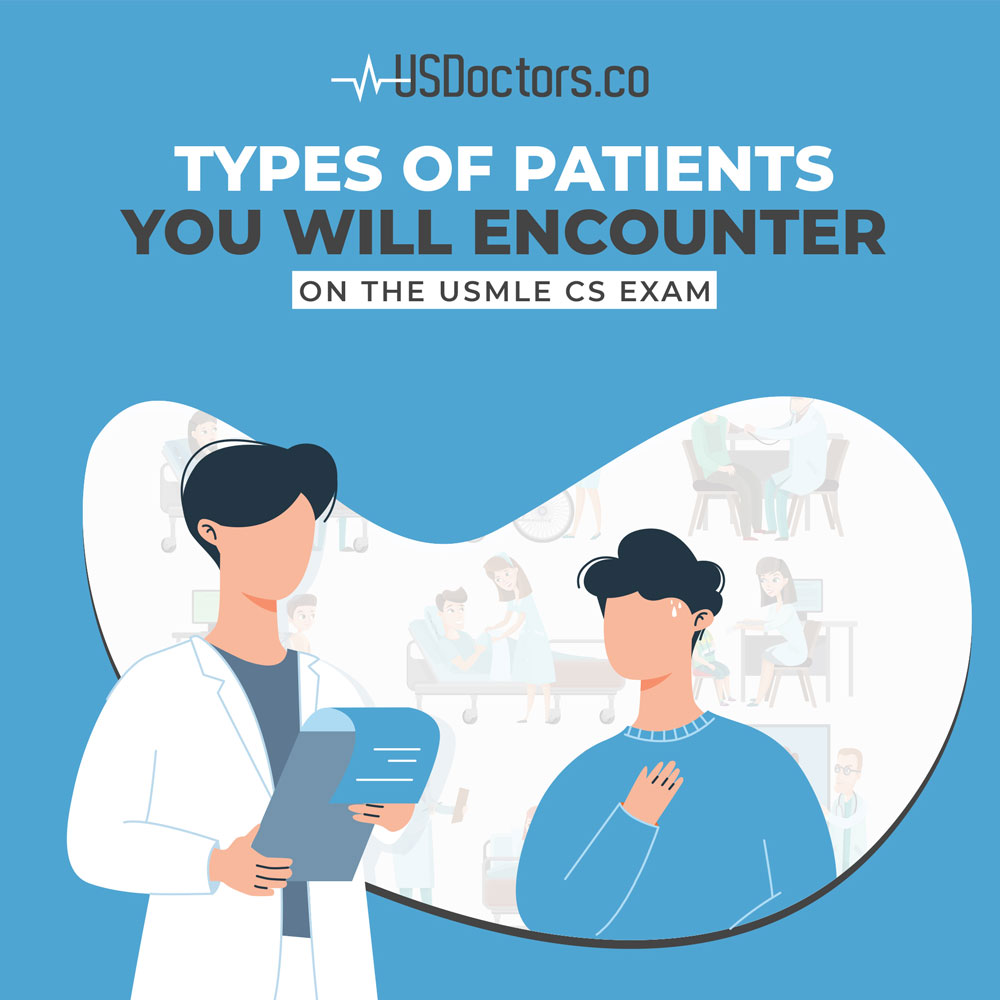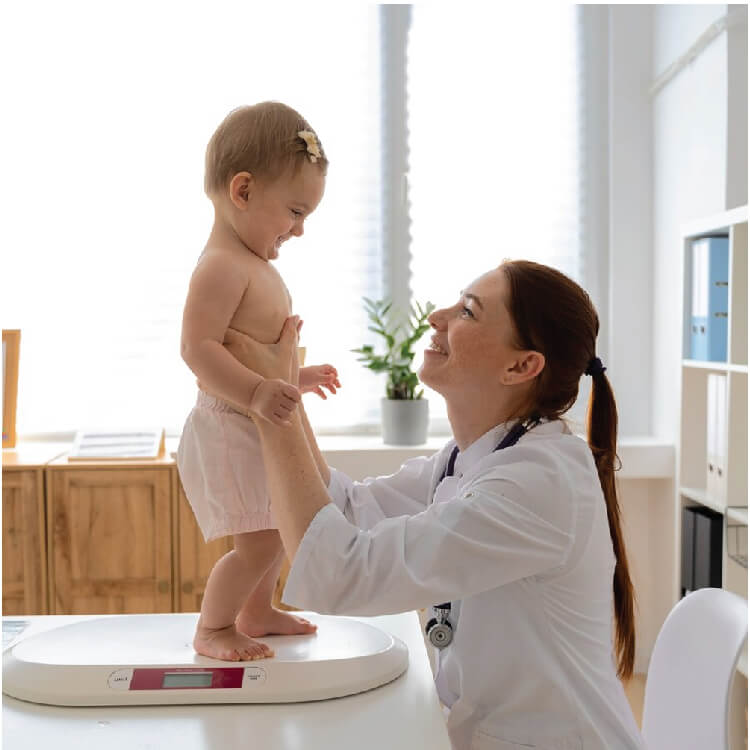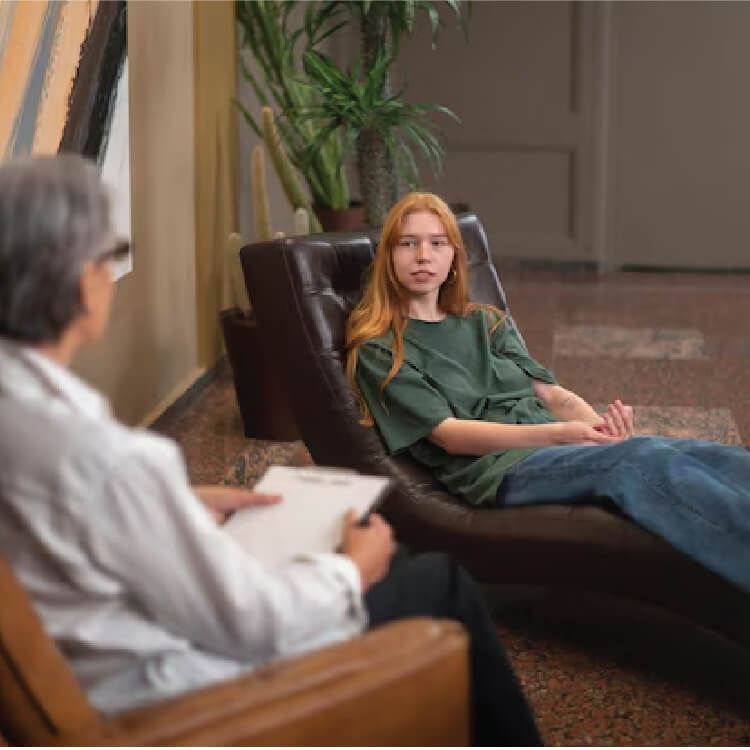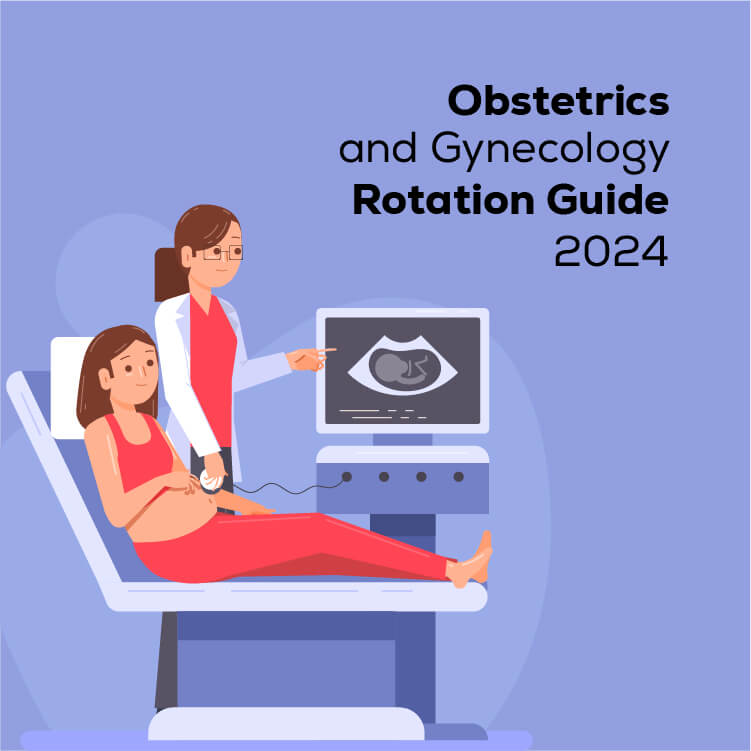
Having completed the USMLE Step 2 CK exam, you must now undertake the USMLE CS exam. Similar to Step 2 CK, the Step 2 CS exam will be 8 hours long. You will encounter 12 standardized patients of uniquely challenging temperaments and personalities with whom you are expected to interact as if you held the primary responsibility of patient care.
During this simulated exercise, you will be required to demonstrate proficiency with patient care tasks such as: eliciting patient histories, performing physical exams, forming and documenting appropriate diagnoses, communicating said diagnoses to patients and colleagues, and drafting a USMLE CS patient note.
Many students frequently wonder what types of patients they will come across in the USMLE CS exam. USDoctors.co has compiled this guide to help you prepare for the Step 2 CS exam. In this article, you will find information on the various types of patients you will face and some tips on how to manage them.
The Secret to Writing the Perfect USMLE CS Patient Note
Now, it’s clear that when you cross paths with 12 different types of patients, you are also dealing with 12 unique people. As a result, the USMLE CS exam is not just a test of your clinical knowledge but also your ability to adapt to various personalities. Many students put in hours into perfecting their USMLE CS patient note but forget that the quality of information they receive from the patient hinges on the quality of interaction they have with them. As such, your interpersonal and communication skills are of particular interest to the examiners, who wish to ascertain whether or not you would be able to communicate effectively with different types of patients in a clinical setting.
Knowing about the various patient types can help you prepare for them in advance, as part of your USMLE CS practice. It will increase your confidence going into the exam, help you craft a stellar USMLE CS patient note, and is likely to have a positive impact on your score.
Patient Types on the USMLE CS Exam
The standardized patients on the USMLE CS exam can be classified into two broad categories; the live patient and the telephone patient. Within these two categories, there will be significant overlap, so we will discuss the walk-in patients first and then move on to the telephone patient.
1. Live Patient Encounter
During the live patient encounter, you will have fifteen minutes to determine the patient’s current condition, extract a medical history, conduct a physical exam, and design a treatment plan. Your USMLE CS patient note will be based on information gathered during the encounter, so it is important to be precise and thorough. As discussed previously, throughout the encounter, you are also being tested on your communication, interpersonal skills, and essentially your ability to build a positive relationship with the patient. Here are the types of patients you are likely to face.
- The Helpful Patient
Some people are by their very nature helpful, kind, and straightforward. As any doctor will testify, these types of patients are the easiest to deal with as they are amiable and conflict-averse; consequently, it is easy to extract relevant medical information from them. It is comparable to having a friend in the exam room, as they answer all your questions and wait for you to make your diagnosis patiently. You should have no trouble dealing with such patients. In fact, you’ll probably find yourself hoping all patients were like this!
- The “Rush Hour” Patient
Alas, not all patients are as helpful as the kind mentioned above, no matter how much you wish they were. The USMLE CS exam designers know that you will meet various types of personalities in real life; the “rush hour” patient is an embodiment of this knowledge. This patient will needlessly try to rush you through the physical exam, complaining about something or the other the entire time. The idea is to corner you, make you lose control of the encounter, and provide a rushed diagnosis.
It is easy to become agitated in such situations and snap at the patient, but you must fight the urge to do so. The exam tests your ability to deal with and provide genuine care for patients even in the face of non-ideal circumstances. If you come across such a patient, make sure to remain composed, answer all of the questions raised by the patient, and maintain control of the conversation.
- The “Always Online” Patient
As part of your USMLE CS practice, you should consider rehearsing for a patient who seems to know more than they should. The “always online” patient is one who has googled their symptoms beforehand and will present their own ideas about their illness. They will seek to cross-examine your views and will possibly try to challenge you when you are performing your exam maneuvers. Here, it is helpful to remind yourself that the patient is genuinely concerned about his health and not merely seeking to undermine your authority. That said, it is also necessary to ensure that you do not humor the patient to the extent of losing control of the encounter. The patient might try to influence your conclusions during the history and physical exam, but it is your job to remain objective and form your own ideas.
- The “Landmine History” Patient
Upon eliciting family histories of or performing a physical exam on some patients, it will become painfully apparent to you that they suffer from a congenital disease. When all the signs point towards this conclusion, the encounter will become a test of your ability to deliver potentially devastating news to the patient. It is imperative to remain straightforward while also empathizing with their situation. It is equally important not to give the patient false hope.
2. Telephone Patient Encounter
As a result of the growing worldwide need for and popularity of telemedicine, the USMLE CS exam also tests candidates on their ability to deliver care to patients over the phone. In many ways, the general expectations for the telephone patient encounter are the same as with the live patient one. Candidates have to show empathy, ask relevant questions, come up with a diagnosis and treatment plan. However, with the medium rendering a physical exam impossible, there is an added emphasis on clear and effective communication.
Once you’ve completed the patient encounter, you will have ten minutes to draft a USMLE CS patient note. Candidates are expected to record the most pertinent information that was used to arrive at the diagnosis, in order of likelihood, in the patient note. The quality of your patient note will depend directly on how well you got along with your patient, no matter what ‘type’ they belonged to, which is why knowing your patient types for the USMLE CS exam beforehand is invaluable.
If you’re looking for more great advice on dealing with the USMLE exams, browse related blogs and articles by visiting the USDoctors.co blog!



